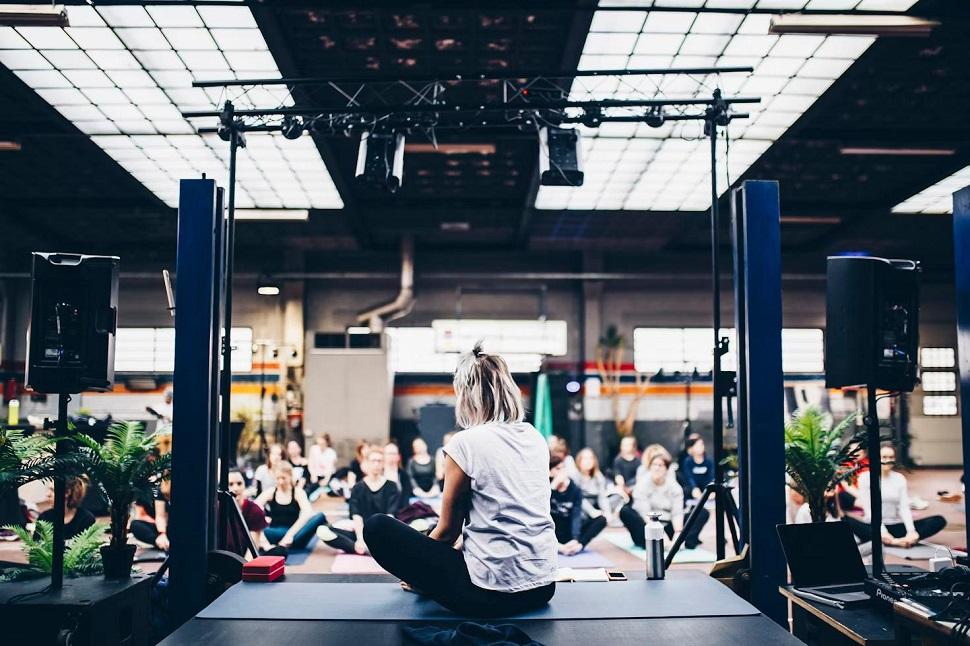Yoga, an ancient form of exercise that traces its origins back to India, has become a celebrated wellness practice across the globe. Rooted in a philosophy that emphasizes the unity of mind, body, and spirit, yoga provides more than just physical benefits; it’s a path toward achieving greater mental and emotional balance. This holistic approach helps practitioners cultivate health, mindfulness, and a deeper connection with their inner selves. Whether you’re seeking physical improvement or mental clarity, the practice of yoga offers valuable tools for enhancing overall well-being.
History of Yoga Exercise:
Ancient Roots in India
Yoga, an age-old practice rooted in over 5000 years of ancient Indian texts and traditions, serves as both a spiritual and physical exercise system that focuses on harmonizing the body with the mind and breath through various breathing exercises, yoga postures, and meditation. It was initially mentioned in the Rigveda, which is comprised of a collection of ancient religious hymns. The philosophies, techniques, and practices of yoga were further refined and developed by the Rishis (sages) who documented their practices in the Upanishads, a huge collection of texts detailing the efficacy of yoga as a tool to achieve spiritual enlightenment. Apart from the spiritual aspect, physical postures, known as asanas, were later detailed in the Yoga Sutras of Patanjali, giving the practice much of its contemporary form.
Evolution of Yoga Practice:
Over centuries, the practice of yoga evolved and diversified under various influences. Initially confined to the Indian subcontinent, it gradually found its way around the world, becoming especially popular in the West during the 20th century. Today, yoga blends styles from traditional routines to more modern adaptations like power yoga, adapting to the fitness needs and preferences of a global audience. This evolution from a sacred ritual to a global fitness trend underscores its adaptability and enduring appeal.
Benefits of Yoga:
- Improved Flexibility and Strength
Yoga poses stretch your muscles and increase your range of motion. Regular practice leads not only to improved flexibility but also strengthens muscles through weight-bearing and resistance exercises integrated into various poses. For instance, poses like the downward dog can strengthen upper body muscles, while poses like the warrior can offer an intense lower body workout.
- Stress Reduction
Yoga is well-known for its ability to ease stress and promote relaxation. Several studies have shown that it can decrease the secretion of cortisol, the primary stress hormone, which helps improve overall levels of stress and anxiety. Using techniques like controlled breathing and mindfulness, yoga helps temper stress and supports a state of calm mental well-being.
- Mindfulness Promotion
Mindfulness through yoga comes from its meditative practices which encourage a focus on the present moment and self-awareness. This can ultimately enhance concentration, focus, and attention span. Regular yoga practice develops mastery over the mind, which is a practice of observing thoughts without judgment. This helps in developing a mentally clear emotionally calm and steady state.
Types of Yoga Practices:
- Hatha Yoga
Hatha Yoga is often considered an excellent entry point for beginners due to its slower pace and focus on basic postures and calm breathing. This practice aims to prepare the body for deeper spiritual practices such as meditation. Hatha classes provide an introduction to the fundamental yoga poses and correct alignment in each pose. The emphasis on slow and controlled movements makes Hatha Yoga a beneficial practice for those looking to enhance flexibility, balance, and mental focus.
- Vinyasa Yoga
Vinyasa Yoga, known for its fluid, movement-intensive practices, contrasts distinctly with the slower pace of Hatha Yoga. Vinyasa connects breath to movement, creating a dynamic flow from one pose to another. This type of yoga can vary greatly in terms of pace and difficulty, providing a highly adaptable practice suitable for many levels of fitness. Vinyasa is particularly popular among those who seek to strengthen their bodies and improve cardiovascular health, all while maintaining a synchronized breath.
- Bikram Yoga
Bikram Yoga consists of a specific series of 26 poses and two breathing exercises performed in a heated room, typically around 105 degrees Fahrenheit. The heat serves to warm the muscles and promote sweating, which is said to help with detoxification. This rigorous form of yoga has standardized sequences that are the same in every class and location, making it easy for practitioners to follow along but challenging due to the high-temperature environment. Bikram Yoga is said to boost flexibility, stamina, and endurance, while also aiding in weight loss.
Yoga Poses and Techniques:
- Downward Dog
The Downward Dog is one of the most recognized yoga poses and serves as a staple in many practices. This pose focuses on lengthening and decompressing the spine, stretching the hamstrings, and strengthening the arms and legs. Regular practice of the Downward Dog can improve digestion, relieve back pain, and enhance overall flexibility. To perform, one starts on their hands and knees, then elevates the hips, forming an inverted V-shape with the body.
- Warrior Poses
Warrior Poses, which include Warrior I, II, and III, are essential for building strength and endurance in yoga. These poses not only enhance stability and balance but also help focus the mind and improve concentration. Warrior I focuses on building strength in the legs, back, and shoulders. Warrior II increases stamina and endurance, particularly in the legs and arms, while Warrior III challenges balance and coordination, utilizing nearly every muscle in the body. Together, these poses form a powerful part of any yoga routine.
- Sun Salutations
Sun Salutations consist of a series of poses performed in a sequence to warm up the body and to thank the sun. This practice can be used as a standalone routine or as a warm-up for a longer session. It is known to improve blood circulation, strengthen the heart, and reduce stress and anxiety. Each movement in a Sun Salutation is synchronized with the breath, enhancing lung capacity and stimulating the respiratory system. Regular practice promotes flexibility and boosts energy levels throughout the day.
Incorporating Yoga into Daily Routine:
Practicing yoga regularly can significantly enhance your physical health and mental well-being. Incorporating yoga into your daily routine can be done in various ways depending on your schedule and preference.
- Morning Yoga Flow
Starting your day with a yoga flow can invigorate your body and sharpen your mind. A typical morning flow includes sun salutations, standing poses, and gentle stretching. This routine can increase your energy levels, improve your mood, and enhance your metabolism. Just 20-30 minutes each morning can set a positive tone for the rest of your day. Focus on breathing deeply and moving fluidly to wake up your body naturally.
- Evening Relaxation Yoga
Evening yoga practices are ideal for unwinding after a busy day. Incorporate poses like forward bends, gentle twists, and restorative yoga positions which promote relaxation and stress relief. A 20-minute session can help in calming the mind and preparing your body for a restful sleep. The emphasis should be on slow movements and deep breaths, allowing your body and mind to slow down.
- Office Desk Yoga
For those spending long hours at a desk, incorporating short yoga sessions can counteract the effects of prolonged sitting. Simple stretches such as seated spinal twists, forward bends, and shoulder stretches can be done right at your desk. These movements help in reducing stiffness and boosting circulation, which in turn increases focus and productivity. Practicing these few minutes of yoga several times throughout the day can significantly improve flexibility and reduce stress levels.
Equipment and Clothing for Yoga Exercise:
Choosing the right equipment and clothing is essential for a comfortable and effective yoga practice.
- Yoga Mats
A good yoga mat is crucial as it provides cushioning and stability. Yoga mats come in various thicknesses, materials, and textures. A standard mat typically has a thickness of about 1/8 inch, providing a balance of comfort and connection with the ground. Consider the grip of the mat to prevent slipping, especially during dynamic or sweaty practices.
- Yoga Blocks
Yoga blocks are helpful for beginners and those with limited flexibility. They provide support and stability in different poses, help deepen stretches, and improve alignment. Blocks can be made of foam, cork, or wood, each offering different levels of support and durability. Using blocks can make challenging poses more accessible and safer.
- Comfortable Clothing
Wearing the right clothing is important in yoga practice as it allows for unrestricted movement and comfort. Opt for clothing that is stretchy yet snug so that it doesn’t interfere with postures or riding up. Fabrics that wick moisture are also preferable, especially for more intense sessions, as they keep the body cool and dry. Choose clothes that reflect your style yet are functional for your yoga practice.
Yoga Exercise and Mental Health:
- The connection between yoga and mental well-being
Yoga, as an ancient form of exercise originating from India, serves more than just physical benefits; it is deeply intertwined with mental health improvements. Mental well-being is a crucial aspect of overall health, and yoga addresses this through its meditative practices and gentle physical movements. The exercises and poses in yoga, known as asanas, are designed not only to strengthen the body but also to clear the mind. Yoga encourages the reduction of stress hormones like cortisol and adrenaline, promoting a state of relaxation and calm. Practitioners often report an uplifted mood and a decrease in symptoms of anxiety and depression after consistent practice. Essentially, by fostering a quiet mind and a relaxed body, yoga helps forge a strong connection between mental and physical health.
- Mind-body awareness through yoga practice
Engaging in yoga encourages a unique kind of mindfulness that heightens body awareness and sensations. Through focused breathing exercises and asana sequences, individuals learn to pay attention to the present moment, which enhances the mind-body connection. This mindfulness aspect is vital in recognizing stress signals and emotional states early, allowing for more effective management of stress and anxiety. Yoga teaches practitioners how to breathe through challenges, leading to better emotional resilience and enhanced self-awareness. The practice aids in understanding the physical manifestations of mental stress in the body, facilitating a more tuned and harmonious existence.
Yoga Retreats and Workshops:

Immersive Yoga Experiences
Yoga retreats offer more than just casual classes; they provide an immersive experience within tranquil environments, often in natural settings. These retreats are designed to deepen the practice away from daily distractions and stressors, offering an opportunity to fully engage with the various aspects of yoga, including meditation, pranayama (breath work), and philosophy. Participants gain a deeper insight into the teachings of yoga in an atmosphere that supports introspection and personal growth.
Benefits of Attending Yoga Retreats
Attending yoga retreats brings numerous benefits. Participants often experience a renewed motivation for regular practice, enhanced techniques, and a deeper understanding of the spiritual and philosophical aspects of yoga. Retreats also provide the chance to connect with like-minded individuals, fostering a community of support and shared experiences. The concentrated nature of retreats can lead to significant breakthroughs in personal practice, helping individuals overcome obstacles that may seem insurmountable in everyday environments. Moreover, the holistic environment of retreats promotes overall wellness, providing a reset for both the mind and body, and encouraging continued health and mindfulness practices.
Conclusion
Yoga, originating from ancient India, is more than just physical exercise. It is a holistic discipline encompassing physical, mental, and spiritual health. Embracing yoga in your daily routine can lead to profound benefits including increased flexibility, stronger muscles, better posture, heightened focus, and enhanced mental health. Regardless of age or fitness level, yoga offers valuable health benefits and promotes a balanced lifestyle. In today’s fast-paced world, integrating yoga can be a key to achieving mindfulness and overall well-being.
